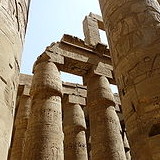
|
Karnak El-Karnak, Luxor, Luxor Governorate, Egypt ☎ +20 2 22617304 Last Updated: 08/24/2023 |
| Karnak is a vast ancient temple complex located near Luxor in the Luxor Governorate of Egypt. It is one of the most significant and well-preserved temple complexes in Egypt, and it played a central role in ancient Egyptian religious practices and architecture. | |
| - Location: Karnak is situated on the east bank of the Nile River, just north of the modern city of Luxor - ancient Thebes. It is part of the historical city of Thebes. - History: The construction of the Karnak complex spanned many centuries, beginning in the Middle Kingdom and continuing through the New Kingdom period -approximately 20th century BCE to 11th century BCE. - Layout: The complex consists of a series of temples, chapels, pylons - monumental gateways, obelisks, statues, and other structures. The temples are dedicated to the god Amun-Ra and other deities. - Main Features: - - Great Hypostyle Hall: One of the most impressive features of Karnak is the Great Hypostyle Hall, a massive hall with a forest of towering columns. It covers an area of about 5,000 square meters (54,000 square feet) and contains 134 massive columns. - - Obelisks: Several obelisks are found within the complex, including the famous twin obelisks known as the Obelisks of Karnak. One of these obelisks still stands at the site, while the other was gifted to France and stands in the Place de la Concorde in Paris. - - Sacred Lake: Karnak also features a large sacred lake that was used for ritual purposes, including purification ceremonies. - Religious Significance: Karnak was dedicated primarily to the worship of Amun-Ra, the chief deity of ancient Egypt. It was a center of religious activity and pilgrimage, and it played a role in the annual Opet Festival, which celebrated the divine union of Amun-Ra and the reigning pharaoh. - Decorations and Inscriptions: The walls of the temples are adorned with intricate carvings, hieroglyphics, and scenes depicting religious rituals, battles, and other aspects of ancient Egyptian life. - Avenue of Sphinxes: The Avenue of Sphinxes once connected the Karnak complex with the Luxor Temple, lined with rows of sphinx statues. Some sections of this avenue have been reconstructed. - Conservation Efforts: Ongoing preservation and restoration efforts are conducted to protect the complex's structures, decorations, and archaeological features. - Tourism: Karnak is a major tourist destination, attracting visitors from around the world who come to marvel at its architecture, history, and artistry. - UNESCO World Heritage Site: Karnak, along with the adjacent Luxor Temple and the Theban Necropolis, is designated as a UNESCO World Heritage Site, recognizing its cultural and historical significance. Karnak stands as a testament to the grandeur of ancient Egyptian temple architecture and the religious practices of the time. Its immense size and well-preserved structures make it a captivating destination for travelers and a valuable archaeological site for researchers. | |
Wikipedia Facebook
Egypt » Egy
Place » Historical Place
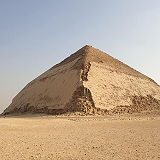
|
Bent Pyramid Place » Historical Place The Bent Pyramid is one of the pyramids built by King Sneferu, the first king of the Dynasty 4. It was called “bent” because of its broken lines due to a change of angle, an engineering issue in its design. Indeed, the pyramid construction began at an angle of 55 degrees but had to be adjusted to 43 degrees due to an overload of blocks resulting in instability. 24 views 💖 1Badrshein, Giza Governorate 3300001, Egypt |

|
Mortuary Temple of Hatshepsut Place » Historical Place The Mortuary Temple of Hatshepsut is one of the most remarkable ancient monuments in Egypt, which surely you will love to visit. The temple was built to honour Queen Hatshepsut, one of the most successful pharaohs in Egyptian history. Located opposite the city of Luxor, it is considered to be a masterpiece of ancient architecture. 42 views 💖 1Al Qarna, Luxor Governorate 1340420, Egypt |
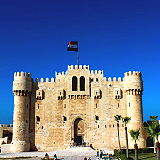
|
Qaitbay Fort Place » Historical Place Qaitbay Fort, also known as the Citadel of Qaitbay, is a historic fortress located on the Mediterranean coast in Alexandria, Egypt. Visitors to Qaitbay Fort can explore its halls, chambers, and enjoy the scenic views from its towers. The fort stands as a testament to the historical significance of Alexandria as a major Mediterranean port and the efforts to protect it through the centuries. 45 views 💖 1Alexandria Governorate, Egypt |
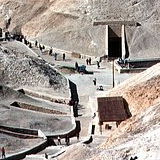
|
Valley of the Monkeys Place » Historical Place The Western Valley is an Egyptian archaeological locality situated adjacent to Luxor's Valley of the Kings and contains a number of remarkable pharaonic burials additional to the main Valley. The Western Valley is also known in Arabic as the Wadi al-Gurud (Valley of the Monkeys), on account of the representations of baboons in several tomb paintings found within the wadi. 49 views 💖 1Al Qarna Desert, Luxor Governorate 1413101, Egypt |
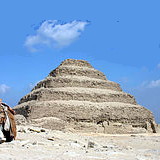
|
Saqqara Necropolis Place » Historical Place The Saqqara Necropolis is a vast ancient burial complex located in the Giza Governorate of Egypt. It is renowned for its historical significance, diverse range of tombs and structures, and the iconic Step Pyramid of Djoser. Saqqara features numerous pyramids, including the world-famous Step pyramid of Djoser,as well as a number of mastabas. Located some 30 km (19 mi) south of modern-day Cairo. 298 views 💖 1Badrshein, Giza Governorate 3352001, Egypt |

|
Abu Simbel Temples Place » Historical Place The Abu Simbel Temples are a pair of ancient Egyptian temples located near the southern border of Egypt, close to the town of Abu Simbel. These temples are renowned for their monumental size, impressive architecture, and historical significance. 473 views 💖 9Abu Simbel, Egypt |
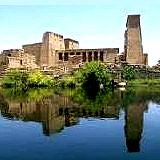
|
Philae Temple Complex Place » Historical Place The Philae Temple Complex is an ancient Egyptian temple complex located on Philae Island in the Nile River near Aswan, Egypt. It is renowned for its well-preserved temples and structures dedicated to various deities. 310 views 💖 1Aswan, Aswan Governorate, Egypt |
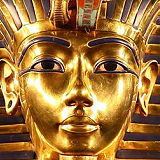
|
Tomb of Tutankhamun Place » Historical Place The Tomb of Tutankhamun, also known as the "Tutankhamun's Burial Chamber," is one of the most famous archaeological discoveries in history. It is located in the Valley of the Kings on the west bank of the Nile River near Luxor, Egypt. 53 views 💖 1Kings Valley Rd, Luxor Governorate 1340420, Egypt |
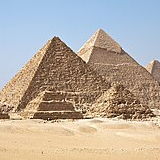
|
Egypt Place » City Egypt is a country located in North Africa, with its capital in Cairo. It is bordered by the Mediterranean Sea to the north, Libya to the west, Sudan to the south, and Israel and the Gaza Strip to the northeast. At approximately 100 million inhabitants, Egypt is the 14th-most populated country in the world, and the third-most populated in Africa, behind Nigeria and Ethiopia. 72 views 💖 1Egypt |
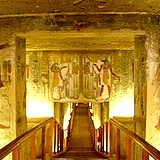
|
Valley of the Kings Place » Historical Place The Valley of the Kings is a famous archaeological site located on the west bank of the Nile in the Luxor Governorate of Egypt. It is renowned for being the burial place of many ancient Egyptian pharaohs and nobles from the New Kingdom period. 315 views 💖 1Luxor, Luxor Governorate 1340420, Egypt |
